When the alarm goes off:
Saving lives on the frontline

Regina, 37, her five children and granddaughter, Flavia, have spent another night in the church in Ezo, South Sudan. Outside, impatient churchgoers are waiting for morning mass to begin. When the sun goes down, the church is again filled with men, women and children who have narrowly escaped death, as violence rages just a few days’ walk away.
“Armed people surrounded our village and started killing us. Some of the villagers were slaughtered, others were injured. The survivors scattered into the bushes around the village.”
It was another sleepless night. Flavia was once again haunted by nightmares. Terrifying screams and cries that wouldn’t stop. The five-year-old has seen death up close. Here, images of parents being slaughtered have been burned into the children’s minds.
“I am grieving because of the loss of my daughter and son-in-law, the mother and father of the grandchild I am taking care of.”
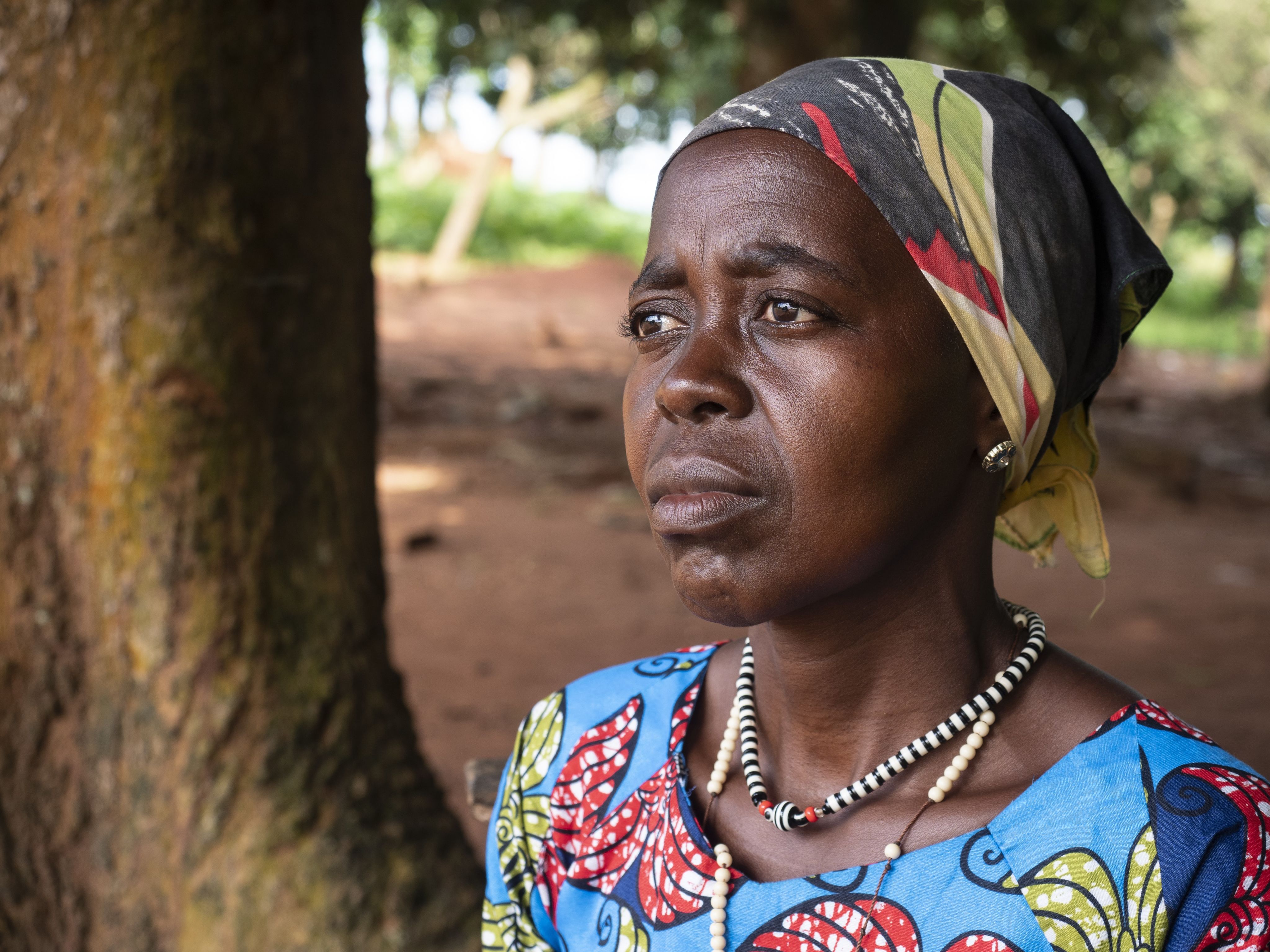
Regina collects the few belongings she has. Outside, a new day of worries begins. How will she be able to comfort little Flavia? How can she provide food for the children?
Fighting against hunger, grief and fear
Regina manages to earn a few pennies for food by selling firewood to the locals. This morning, she sets off as usual to collect firewood. She feels guilty about leaving Flavia to be looked after by the other children in the family.
“I think about the food I left in my garden, now I am so hungry. The children have nothing to eat, they have no clothes. I feel so sad.”
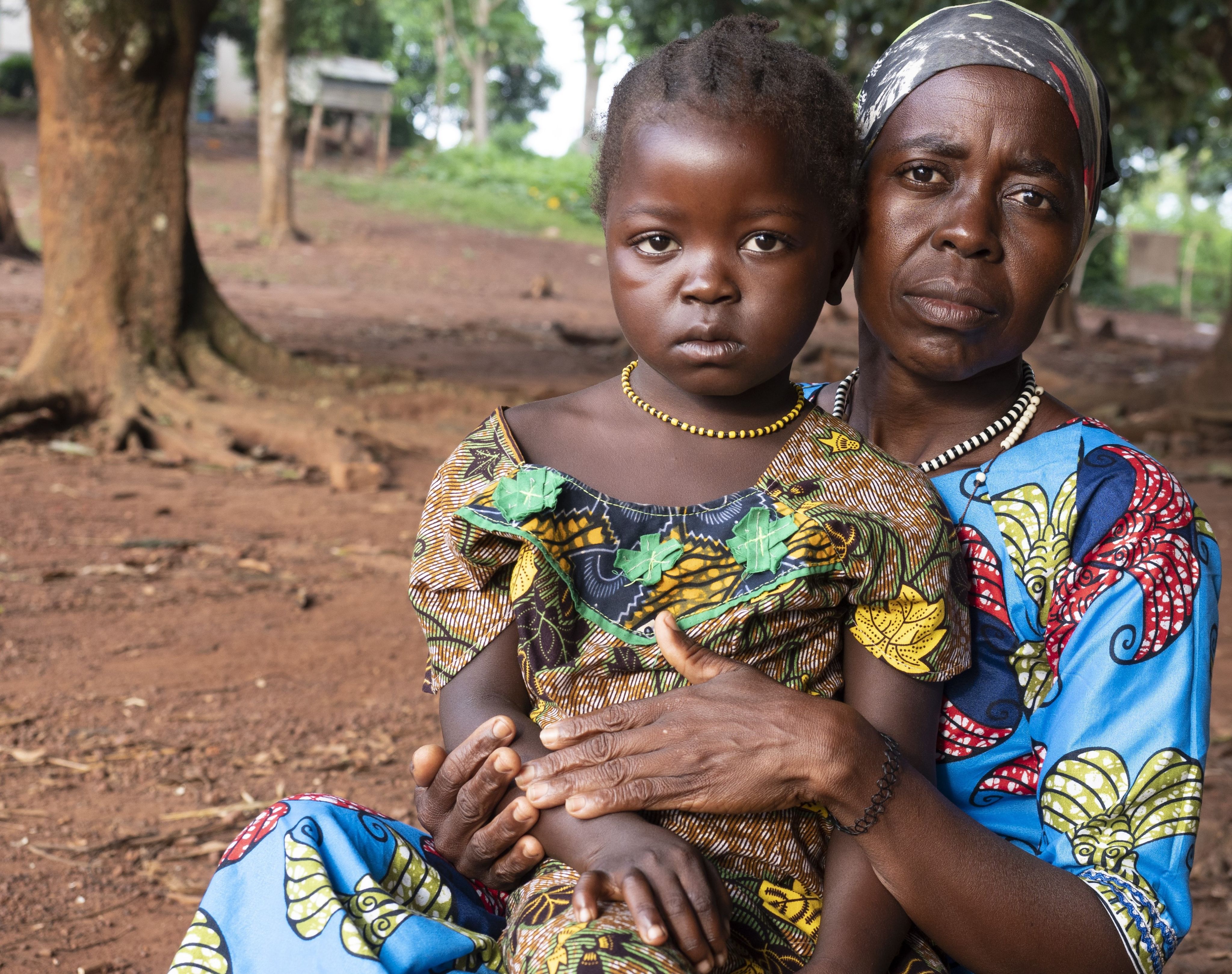
If she only had a tarpaulin to make a roof over her head, some blankets, cooking equipment and water jugs – then she would somehow get by.
But the little money she manages to scrape together goes on food. Even so, the children are hungry when they go to bed and hungry when they get up. They can keep neither hunger, sorrow nor fear away.
What Regina does not know is that the Norwegian Refugee Council's emergency team is on its way to assist her and the other families who are suffering in Ezo.

Aid work on the frontline
In South Sudan war and violent conflict have forced millions of people to flee their homes in search of a safe haven. Many end up trapped in conflict areas that are difficult for aid workers to reach.
This has sadly become part of our daily lives in most of the countries where we work. In humanitarian language, these environments are described as “hard-to-reach” areas. places where political, bureaucratic, physical and security constraints prevent people from getting the help they need.
For over 10 years, NRC has been adapting its approaches and ways of working to ensure that this is not the case for our own programmes. Our Emergency Rapid Response Mobile team (ERRM) in South Sudan is part of this. They are on the frontline, saving the lives of people displaced by fighting and floods.
In the world’s youngest state, a devastating conflict continues to displace millions.
In 2011, South Sudan gained independence from Sudan, bringing an end to Africa’s longest civil war. Two years later, violent conflict broke out after a political disagreement between President Salva Kiir and former Vice-President Riek Machar. As a result, over four million people have been forced to flee to neighbouring countries or to other parts of South Sudan.
More than 1.6 million people remain displaced within South Sudan, with 75 per cent living in host communities and the remaining 25 per cent living in camp-like settings. Recently, unprecedented recurrent flooding has continued to force yet more people to flee their homes.
Active military fighting has been notably reduced since the transitional unity government was formed in February 2020. However, local conflicts are on the rise.
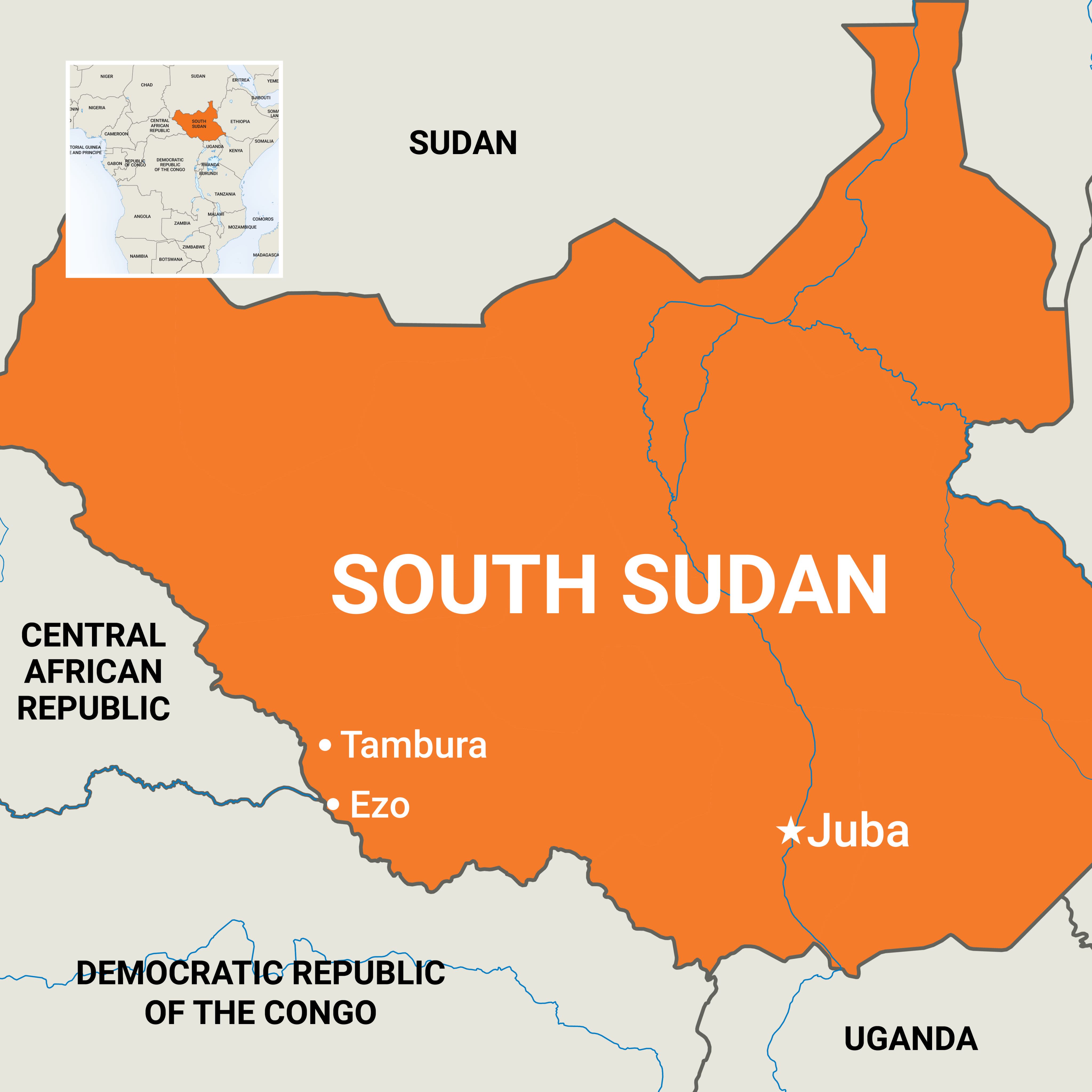
In the backyard of death
45,000 people fled the killings in Tamura. They saved their lives. Now they are struggling to stay alive.
They left all their belongings. They sleep in the open. They are starving and they are traumatised.
In early June 2021, clashes erupted in Tambura County between competing armed groups belonging to different factions of the government. According to a report by Amnesty International, between June and October, dozens of civilians were killed and some 80,000 were forced to flee their homes.
“A trail of death, destruction and division ensued after politicians whipped up ethnic hatred and mobilised youth to fight,” says Deprose Muchena, Amnesty International’s Director for East and Southern Africa. “The testimonies we have gathered speak of unimaginable violence, including civilians killed as they fled and bodies set on fire and mutilated.”
“A trail of death, destruction and division ensued after politicians whipped up ethnic hatred and mobilised youth to fight. The testimonies we have gathered speak of unimaginable violence, including civilians killed as they fled and bodies set on fire and mutilated.”
Bloody testimonies and cries for help

Gracia Eluzeyo, 35, had to flee alone with her three children after her husband was shot dead.
“I was told that my husband had been shot dead. There was the sound of gunfire all over the place. He is gone. The family recovered the body and buried him,” she says.

Phillip Kamillo, 52.
Another survivor tells us: “A blind person was brutally slaughtered, the body was dumped in a hut and the hut was set ablaze. Children, people with disabilities, older people were mercilessly targeted and brutally murdered in the villages in Tambura,” says Phillip Kamillo, 52

Israel Jackson Antibati, 14.
Israel Jackson Antibati, 14, is now staying in Ezo together with his aunt: “Armed people attacked our house and killed my father and mother and my brother. I ran in to the bushes alone. I found some people walking to Ezo so I joined them,” he tells us.

Elizabeth Antony Tumo, 25, and one of her children.
Elizabeth Antony Tumo, 25, and her three children fled from Nambia village, the epicentre of the recent violence, after her husband was killed.
The family is now sleeping in the church.
“Life is challenging at the church because we sleep in an open space without any privacy. The worst is that very early in the morning we are told to leave so that the church can have morning prayers,” she says.
She also reveals that there are no bathing facilities on the church premises: “If I want to have a shower, I have nowhere to go. There is no place to ensure privacy for women.”

Phillip Kamillo, 52.
Phillip Kamillo, 52.

Israel Jackson Antibati, 14.
Israel Jackson Antibati, 14.

Elizabeth Antony Tumo, 25, and one of her children.
Elizabeth Antony Tumo, 25, and one of her children.
The alarm goes off
"If more humanitarian aid is not delivered, the affected population will continue to die of starvation and other preventable ailments."
CHARLES ABEL SUDANI, county commissioner in Ezo
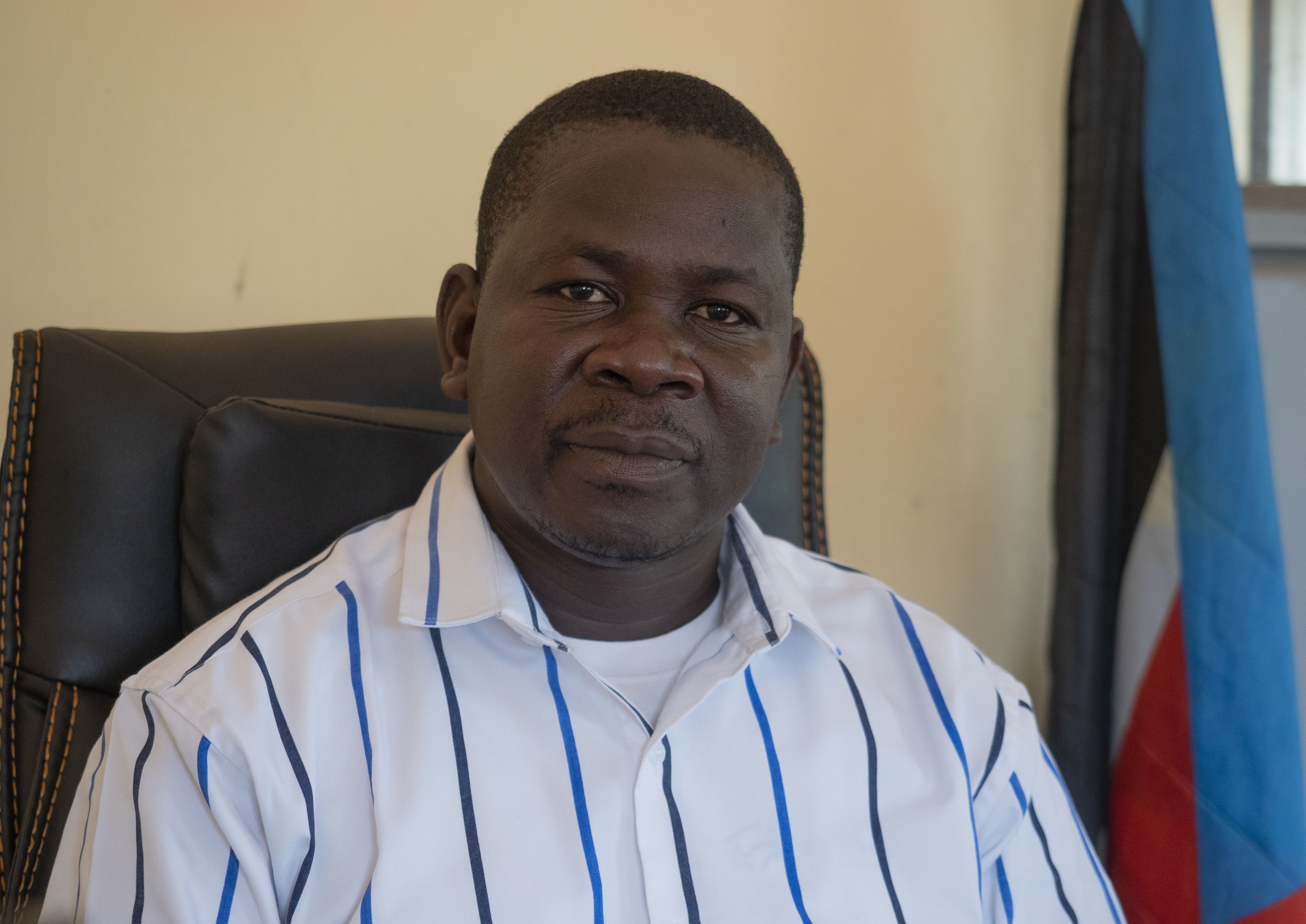
In July, the alarm went off. Charles Abel Sudani, the county commissioner in Ezo, began calling the Norwegian Refugee Council (NRC) and other aid agencies for help.
Since then, in close cooperation with the commissioner, NRC was the first aid agency on the ground to respond and has since been responding to the crisis and scaling up life-saving aid. On 15 November 2021, Ezo County Commissioner, Charles Abel Sudani, told Anadolu Agency that the number of displaced people from Tambura County to Ezo had passed 45,000. He reported that none of them had enough food to eat.
“They are starving since they left all of their belongings and food in Tambura.”
Sudani thanked humanitarian organisations for coming to their support but lamented that the assistance provided so far had been inadequate to meet the needs of everyone.
"If more humanitarian aid is not delivered, the affected population would continue to die of starvation and other preventable ailments," he warned.
Aid is on the way
NRC’s emergency response team
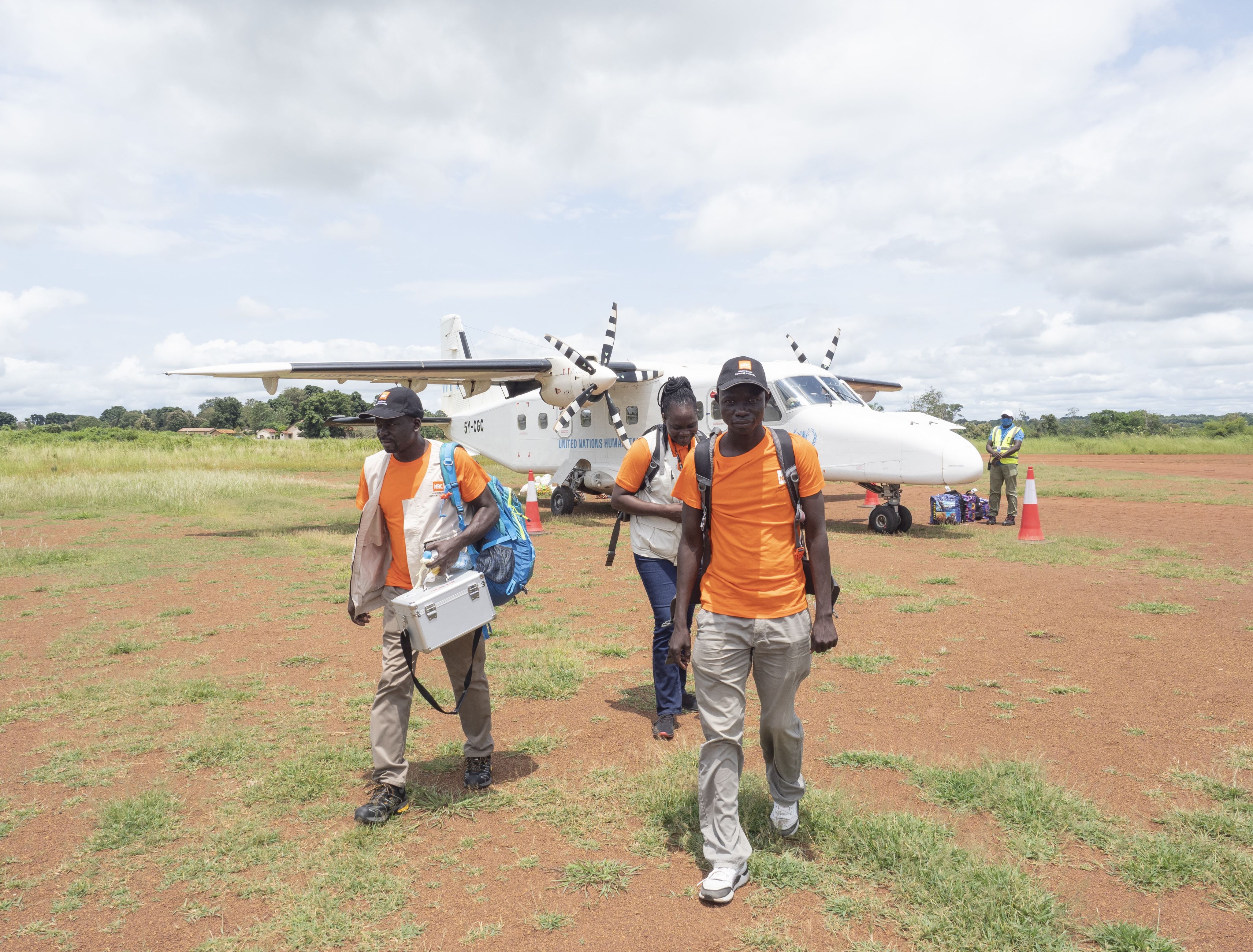
Ahmed Alberawi, NRC’s emergency response project manager for South Sudan, is putting together a team and preparing a new field mission to Ezo.
The team consists of Loke Raymond Okello (shelter officer), Dickens Leju Dingiri (protection officer), Sitima Joyce Justin (education coordinator), Lumago Moses (WASH officer) and Obale Moses (WASH and shelter project manager).
Loke Raymond Okello and Lumago Moses have already spent two months in Ezo assessing what’s needed. They have identified the people who need help and prepared everything on the ground. They are still in Ezo and ready to join the rest of the team and start the distribution.
Okello and Moses have also set up 12 toilets, eight showers and eight water pumps. Now the construction of new classrooms is well under way. But the needs are enormous. Since June, more than 45,000 children, women and men have come to Ezo, and every day new people arrive.
DAY #1
A one-week-operation starts
AHMED ALBERAWI, NRC’s emergency response project manager for South Sudan, is briefing the team.
Frequent security checks are a part of the daily routines.
Briefing the team
“I do have to remind you that this location is a hard-to-reach area,” says Alberawi, as he briefs the team. “So far, we have coordinated with all the security partners and our security department as well. Now the security clearance has been granted, but of course that requires a lot of participation from you.”
Alberawi gives a final reminder:
“Of course, you need to make sure you have all the field kits with you, including tents and communication devices.”
“I will need you to check in with updates every day, morning and evening. All this communication is important for us, so that if something happens, we can evacuate you quickly and update the other stakeholders.”
Twelve aid workers killed in 2021
Aid work can be highly dangerous in South Sudan. Unprecedented numbers of attacks against aid workers are making it harder to deliver aid to those in need and have led to the suspension of crucial humanitarian deliveries. Twelve aid workers were killed in attacks in 2021, according AWSD.
The team members have all been displaced themselves and have received humanitarian assistance. Now they have dedicated themselves to being humanitarian workers, and want to give something back. They know the location. They speak the language. They know what it is like to be in this dire situation, and they know the importance of emergency assistance. They are ready for the mission and they know what to do.
“I have been in a situation like they are in now. I have been displaced and a refugee for quite some time. At the end you lose hope, but it was the humanitarian workers who gave us hope again.”
“As you know, 7,500 newly displaced people recently arrived in Ezo from Tambura. Those people have been displaced for almost a week. You have to make sure that we have enough supplies and materials to support them,” says Alberawi.
DAY #2
Arriving in Ezo

After an hour-long flight from Juba, South Sudan’s capital, and a seven-hour drive in a 4x4 on rough, unpaved and muddy roads, Leju, Obale and Sitima arrive in Ezo and join their teammates Raymond and Lumago.
Raymond has already spent time at the site and met displaced families, mothers and children to assess their situation and identify needs.
“I saw children with swollen feet who had been walking for seven days or more from Tambura to Ezo. Some were injured and some were without clothing. These are horrible scenes.”
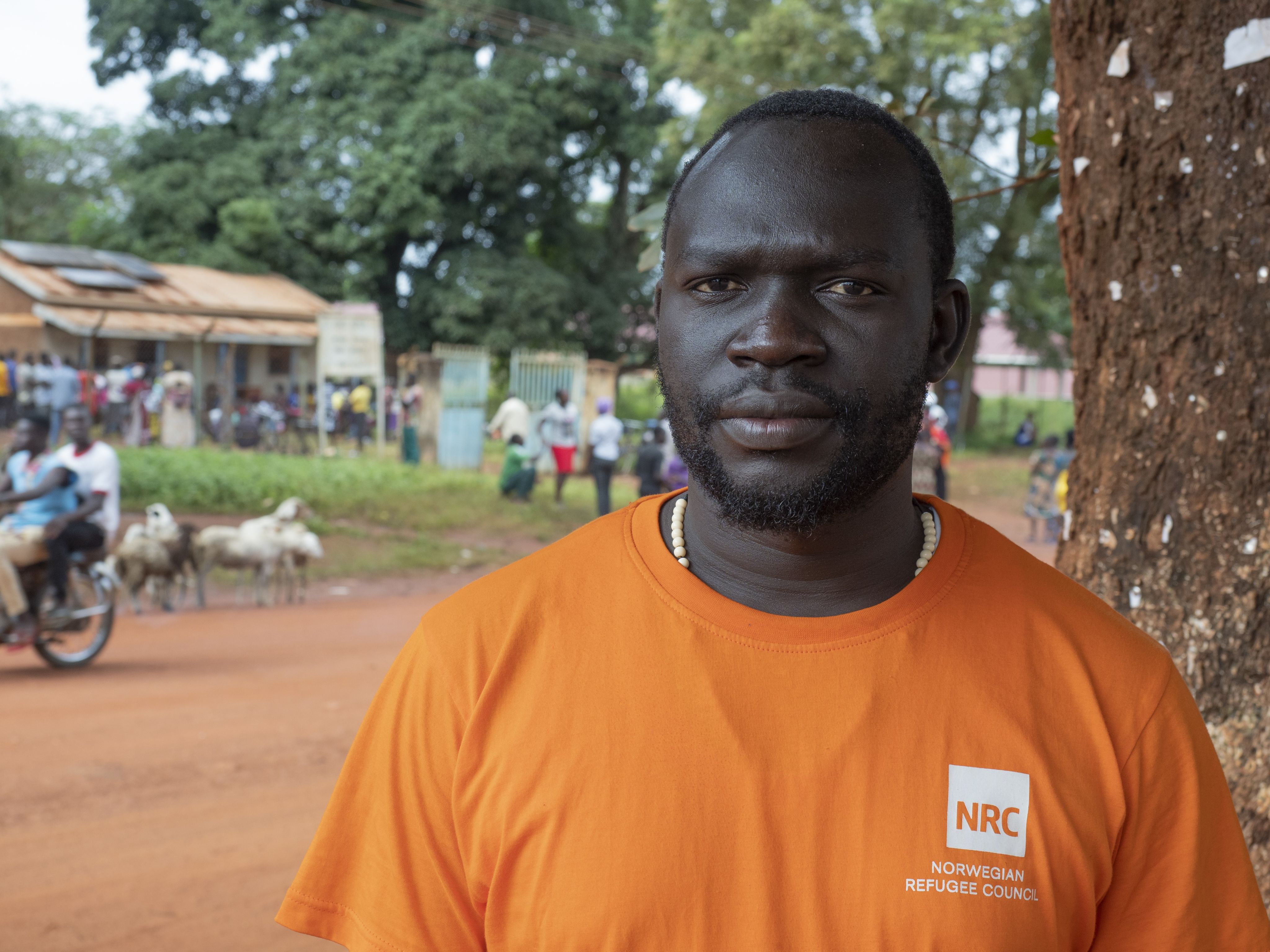
Raymond is the shelter expert in the team, but he must deal with other needs as well.
“Very often we are the first on the ground to meet the humanitarian needs. The most important priorities are food and shelter, but many displaced people suffer from trauma due to all the bad things that have happened to them. I meet with newly arrived families, and you can see the stress on their faces. They are traumatised,” he says.
DAY #3
Preparing for the distribution
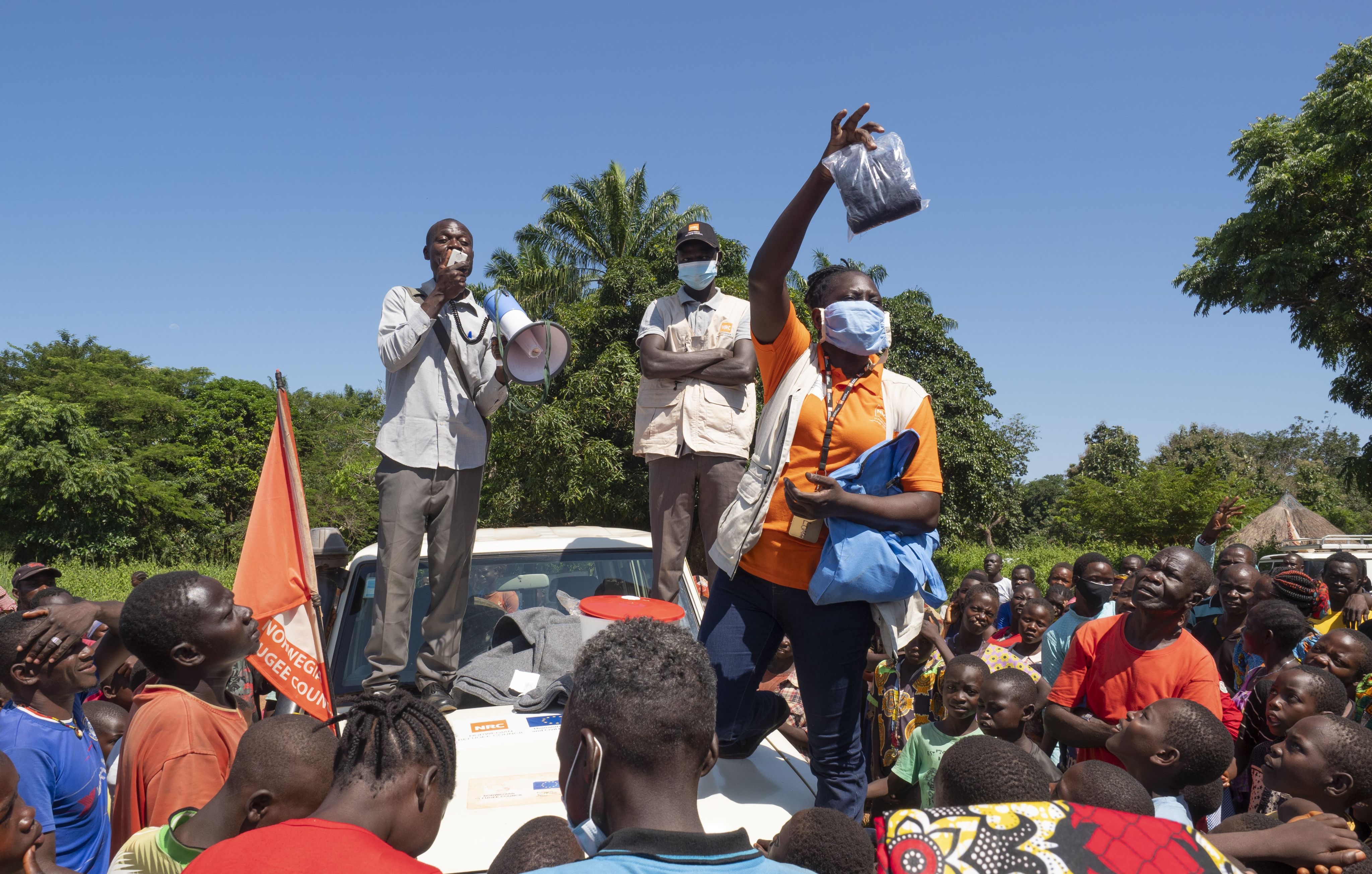
"Please follow our instructions”
Over the next few days, the NRC team will hand out money for food, as well as essential items such as plastic sheeting, blankets, clothes, solar lamps, soap and other hygiene items.

Sitina makes sure that all preparations are done well.
Two NRC staff members have climbed on the hood of the NRC Land Cruiser together with Martin Saini, Relief and Rehabilitation Commission in Ezo County. He holds a megaphone in his left hand while shouting into the microphone.
“Listen carefully. I know you are impatient and have suffered a lot, but now you will get help. Please follow our instructions,” he says, before listing the items that will be distributed.

Dickens Leju Dingiri
Leju is filled with emotions. Just a few weeks ago, he himself escaped the fighting and killing in Tambura.
“About three weeks ago I was evacuated from Tambura, the same place these people just fled from. It was a Saturday and there was rapid gunfire from around 10am to 5pm. I was afraid and was really worried that I might not get out of that place.”
“These people who are displaced from Tambura, and now arriving here in Ezo, are people who are really in need of assistance. They basically left their houses without taking anything with them. Our presence here is very important to help them survive the coming days, weeks and months.”

Several day-workers have been hired to help prepare for the distribution.
As a protection officer, Leju looks for people showing signs of physical and emotional disturbance so that he can provide psychological first aid and link those with serious emotional problems to more specialised service providers.
“The first experience when I arrive in a new displacement site is usually the feeling of pain, anger, heartbreak and frustration at seeing people being forced to live in miserable conditions with very limited basic services. However, I try to show them that it is not the ‘end of life’ and they should not hold themselves to blame.”

Dickens Leju Dingiri
Dickens Leju Dingiri

Sitina makes sure that all preparations are done well.
Sitina makes sure that all preparations are done well.

Several day-workers have been hired to help prepare for the distribution.
Several day-workers have been hired to help prepare for the distribution.
Regina is lining up
Regina is lining up together with other individuals and heads of households. They are waiting to be registered.
“In the morning when I heard that I was among those who are going to receive the items, I felt happy,” she is telling Raymond, standing next to her.
Finally, Regina is being registered.
Several day-workers have been hired to help prepare for the distribution. They put together the emergency kits and lay them out in neat rows on the ground.
“It is important that everything is done in the right order and in a proper way. We must avoid chaos and situations that could endanger the safety of the displaced people or our own employees,” says WASH and Shelter Manager- Obale Moses.
DAY #4, 5 and 6
The distribution
Smiles and new hope
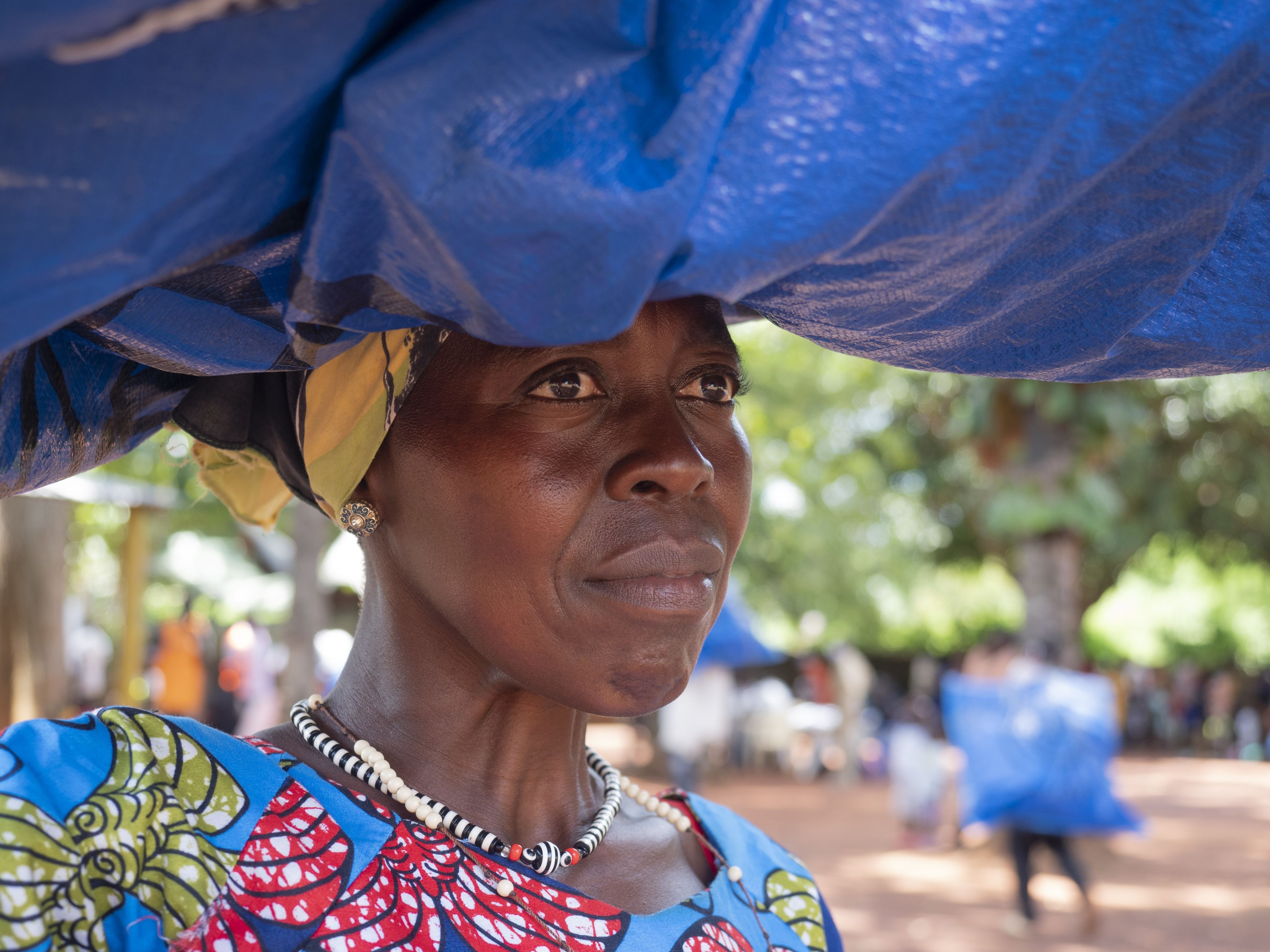

Regina has received her emergency kit.
Regina has received her emergency kit.

Jovana Beyegena with her four children outside their temporary home in Ezo.
Jovana Beyegena with her four children outside their temporary home in Ezo.

The situation is very challenging for Satima.
The situation is very challenging for Satima.

Sitima Joyce, together with headmistress Christine Angudeyo of Progressive primary and Nursery School in Ezo County.
Sitima Joyce, together with headmistress Christine Angudeyo of Progressive primary and Nursery School in Ezo County.

Lilian Peter Gift, 6, is one of the 6,000 displaced children benefitting from NRC’s school support.
Lilian Peter Gift, 6, is one of the 6,000 displaced children benefitting from NRC’s school support.
Regina is among the first to receive an emergency kit. For the first time we see a smile on her face.

Regina has received her emergency kit.
“The plastic sheeting I have received is going to help me set up a shelter for myself and the children. I will now be able to move out of the church into my own shelter and enjoy some privacy,” she says.

Jovana Beyegena with her four children outside their temporary home in Ezo.
Jovana Beyegena, 28, had to flee from Tambura with her four children. Her husband was killed. She has just received an emergency kit, complete with plastic sheeting, and has made a waterproof roof for her new temporary home in Ezo.
“I was able to construct a shelter for myself and the children,” she says. “I’m so happy to receive the items.”

The situation is very challenging for Satima.
For some of the team members, the situation is very challenging. Sitima is full of emotions. More than 30 years ago she had to flee for her life along the same roads she is now travelling along.
“This makes me remember how my situation was 30 years ago,” Sitima continues. “I walked the same road when I was a child, and today I am here again to support the families who are displaced from Tambura. It is such an old but strong memory of my childhood, and it still reminds me of how we struggled to move, how we cried. I never imagined I would be back on this road today.”
But she is happy to be back. “I feel satisfied when the people we support recover from an emergency. When they get relief from the traumatic events they have experienced and are able to find the necessities of life,” she says.

Sitima Joyce, together with headmistress Christine Angudeyo of Progressive primary and Nursery School in Ezo County.
She gains pleasure when displaced children return to learning without barriers and are given the quality of education they deserve.
"We know it’s too late to wait until the crisis is over to resume education. It is not just about learning how to read and write. Schools are also places where children have the opportunity to cope with stress and deal with trauma.”
A life of displacement is demanding for many parents. They may be single parents or have had to flee alone with their children. They have to establish themselves in a new place without a network of family and friends. And they often struggle to find work and support their families. This makes school especially important.
Find out more about why we must invest in education for displaced children

Lilian Peter Gift, 6, is one of the 6,000 displaced children benefitting from NRC’s school support.
“I have been to school through tough times, and I always like encouraging displaced children by telling them about my own experience and advising them to persist and go on with their education. It is always important to hope, even in the most difficult situation. Hope for the future, hope for better things is very important,” Sitima says.
DAY #7
Time for rest

After a third day of distributions, the team finally finds time to rest and talk. They are cheerful and satisfied, but exhausted.

THE TEAM. Back row (left to right): Loke Raymond Okello, shelter officer, Dickens Leju Dingiri, protection officer. Front row (left to right): Sitima Joyce Justin, education coordinator, Lumago Moses, WASH officer and Obale Moses, WASH & Shelter project manager.
A total of 5,156 households (30,318 individuals) benefited from the distribution.
“It was difficult, but we are happy that we came to Ezo, because after a week of interacting there was a growing feeling of hope. Being with the displaced for so many days, we can see their smiles and faces changing, and the children playing. We feel we have accomplished something as an emergency response team,” says Raymond.
“We try to be strong and not show too many emotions because it can make people feel like there is no hope of things getting better.”

After a third day of distributions, the team finally finds time to rest and talk.
He tells us that he chose to be a humanitarian worker because he has been in a situation like this himself.
“I have been displaced and a refugee for quite some time. At the end you lose hope, but it was the humanitarian workers who gave us hope again.”
“It is important to be a humanitarian worker. I feel good. My team and I are doing a lot of work and changing people’s lives.”
For Raymond the work has become a passion for him. “I love to just give back and touch people’s lives, see the smiles on their faces and bring about change,” he says.

THE TEAM. Back row (left to right): Loke Raymond Okello, shelter officer, Dickens Leju Dingiri, protection officer. Front row (left to right): Sitima Joyce Justin, education coordinator, Lumago Moses, WASH officer and Obale Moses, WASH & Shelter project manager.
THE TEAM. Back row (left to right): Loke Raymond Okello, shelter officer, Dickens Leju Dingiri, protection officer. Front row (left to right): Sitima Joyce Justin, education coordinator, Lumago Moses, WASH officer and Obale Moses, WASH & Shelter project manager.

After a third day of distributions, the team finally finds time to rest and talk.
After a third day of distributions, the team finally finds time to rest and talk.
New missions await

The five colleagues have gained even more experience and their team spirit has been strengthened. New missions are ahead of them.
NRC has 358 employees in South Sudan. The five team members are part of a larger emergency force of 44 people. The next assignment may be to help families who have been driven to flee by floods, or where flooding has isolated communities and cut them off from the outside world.
There is no shortage of assignments in a country where almost seven out of ten people have an urgent need for humanitarian aid.
NRC in South Sudan
A total of 1,690,703 people in need received our assistance in 2020.
100,286 people benefited from our education programme
490,789 people benefited from our food security programme
93,859 people benefited from our shelter programme
38,749 people benefited from our information, counselling and legal assistance (ICLA) programme

